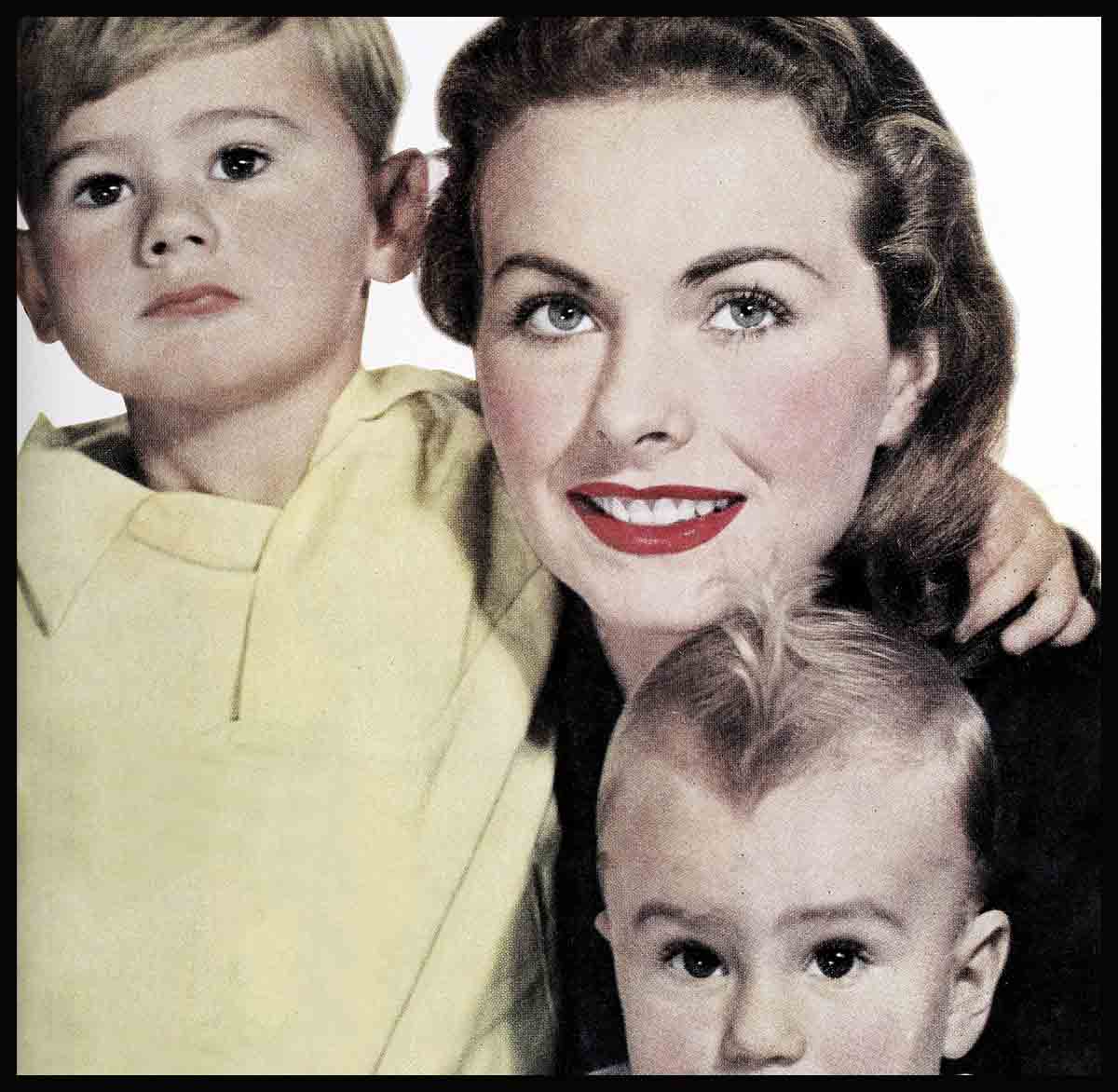
On A Pink Loud With Jeanne Crain
On the hearth, a big log crackles cheerily. Our two-year-old plays on the floor. Across the dinner table from me is the wife of mine who brings out all the Byron in me.
I am, I realize suddenly, about to embark upon a king-sized helping of rutabagas, a poor relation of the turnip family with whom I have long been at war. An edible that under more ordinary circumstances is grounds for a bit of husbandly homicide, but being married to Jeanne is no ordinary circumstance.
“Darling, you must eat your rutabagas,” she says sweetly.
“But, darling, I don’t want them. I don’t like rutabagas,” I say, being equally sweet but firm.
“You should eat them anyway. You must for our children’s sake,” she says, all wife and little mother. “How can we make him eat them if you don’t?” she inquires, with a graceful nod in the direction of Paul Jr., who is now completely engrossed in the mechanics of making a little toy plastic hen squat and lay little toy eggs.
“He isn’t even looking,” I protest.
“But suppose he does look,” she goes on. “You should eat a little of everything.”
“What about oysters?” I counter, remembering how much she dislikes them, then, remembering too late that by camouflaging them completely with hot sauce she does conscientiously eat them. “But you don’t chewthem,” I say weakly, intent upon having some small victory.
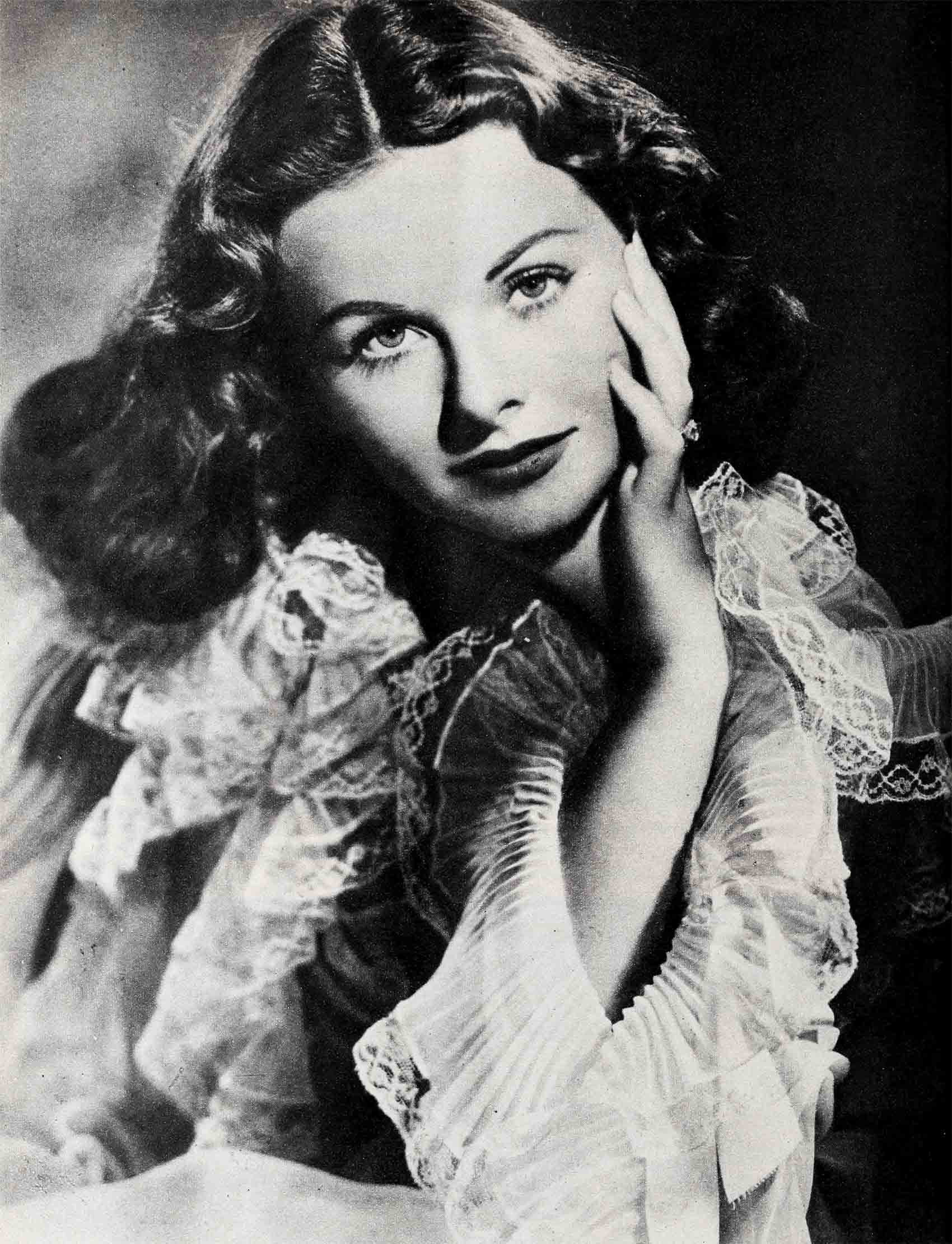
Do I recall such-and-such friends of ours, she reminds me softly. Friends whose offspring won’t eat any vegetables at all, “because his Daddy doesn’t eat them”? Yes, I remember. How can I forget. Ever since his wife related this bit of domestic drama, Jeanne has been determined our sons will not go through life missing any vitamins for lack of their father’s company. “But I will not eat rutabagas,” I reiterate . . . Yet even then, I know I will.
She’s sugar and spice and everything nice, all grown-up, this girl Jeanne. And she still has all the freshness, spiritual sweetness and gentle goodness which so impressed me when I first met her.
Jeanne has changed very little fundamentally, other than growing up. She is perhaps a little less impulsive. She thinks for herself more and voices her opinion more readily. She is less shy. Less conservative about my clothes, as I found when I walked in wearing a new plaid sport coat that would give Crosby competition, and was greeted with an approving, “Oh Paul, I like it!” And less conservative about her own clothes, as I found when we were in New York, recently, and spent a few hours in designer Ceil Chapman’s salon. This was Jeanne’s first really sophisticated shopping spree. Until then a dress had just been a dress to her, and her preference has always been for peasant-type clothes, as has been mine. But this was the end of the buying season, many models were reduced, and my wife just looked too beautiful in all of them. “Like it?” she would ask, modeling one for me. At my slightly ecstatic look she would come out in another, even lovelier. We wound up buying all of them. “You’re not getting all of these,” was my first reaction. But I was immediately melted by her, “But, darling, don’t you want me to look pretty for you?”
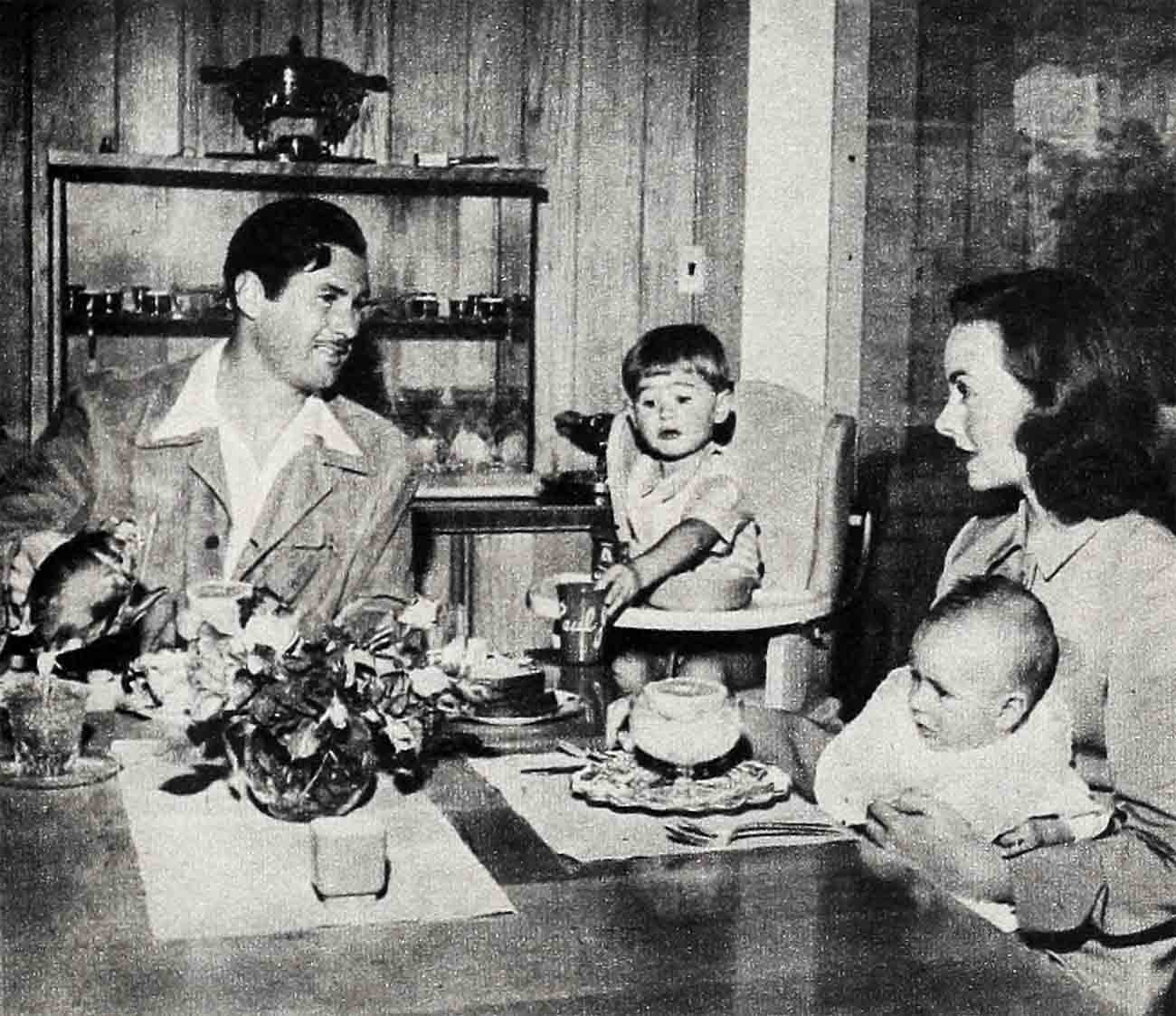
Jeanne’s increasing awareness of clothes has been influenced by the more sophisticated roles she plays. She’s: swayed, in some measure, by every part she portrays, as I first discovered and to some embarrassment, when she was working in “Margie,” her first picture following our marriage. We sometimes lunch together at some restaurant off the lot, as a change from the studio commissary. This particular day we had agreed to meet in Beverly Hills, and I was waiting for her, when I noticed a little girl skipping down the street. As she skipped nearer, it developed she was my wife. I kissed her, and she turned with a happy little skip, to walk away with me. But not before I overheard a bystander remark, “Can you imagine that man kissing a child like that!”
Although there is, I insist, a limit on just how much any actress should be influenced by the parts she plays, particularly since Jeanne has recently made one called “Cheaper by the Dozen,” and getting all happed up about the economical advantages of a family group plan. “Well then, cheaper by the half-dozen,” she wheedles. “Say, six?” At my, “Say a third of a dozen,” she objects, “What a little family that would be.” Although, until this picture began, Jeanne, too, had her heart set on a family of four.
Although never belligerent or argumentative, Jeanne won’t sacrifice honesty for diplomacy’s sake. Her full Irish is aroused at any intolerance or injustice. She never follows the line of least mental resistance. She reads incessantly. A very quick study there is no homework for Mrs. B., who memorizes her lines, whether two pages or twenty, usually while having her hair dressed at the studio in the early a.m.
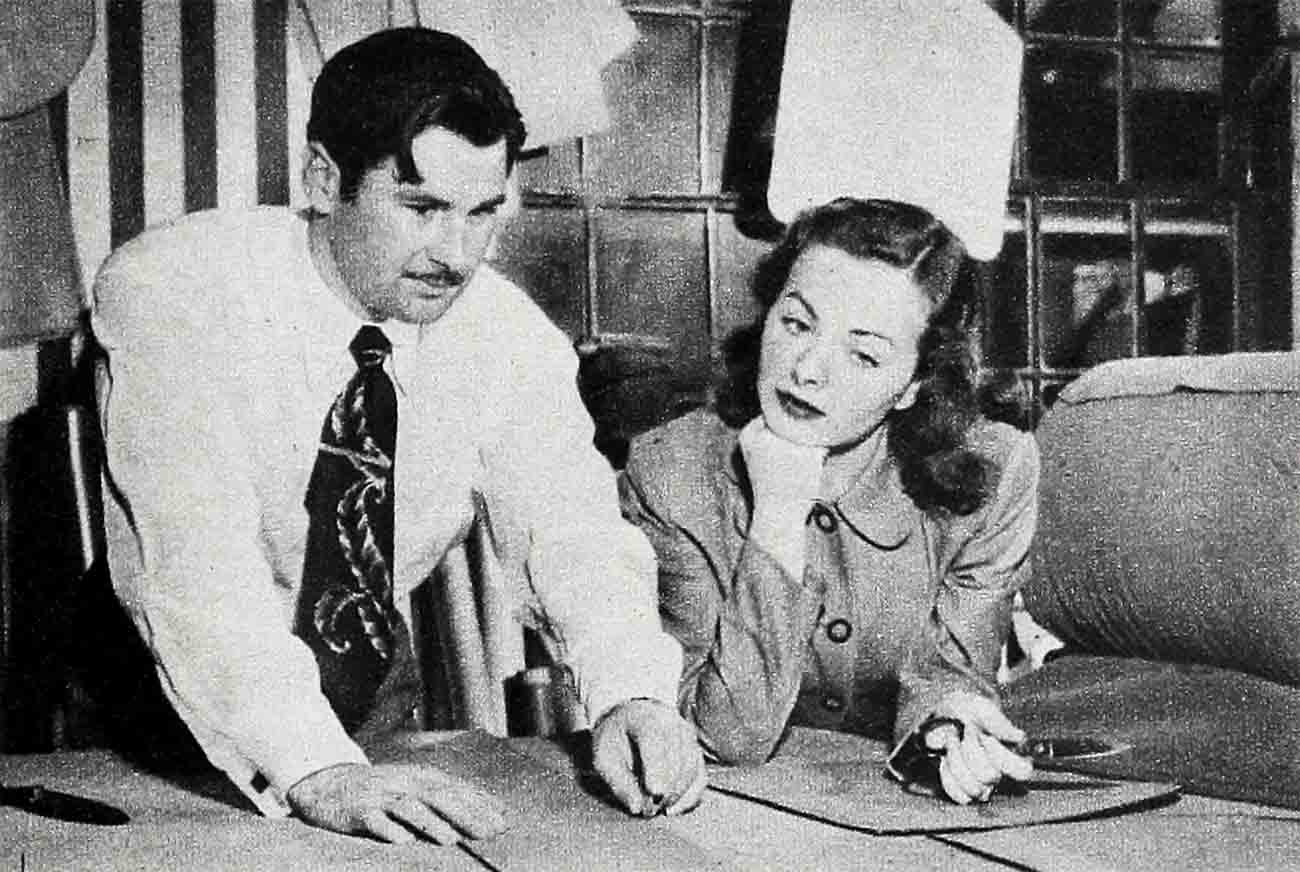
Yes, Jeanne is, I must say, exceptionally well-versed, even unto an inter-house circulating library. Ours circulates throughout parlor, dressing room and bath. Books books everywhere. When we built our new home, we put one solid wall of the living room into bookshelves and thought, then we would never fill them. But they’re overflowing now. When Jeanne was waiting for the babies, she had a hobby or collecting children’s books, not just for children from the ages of, say, one to six but on up through maturity. Thus, I was very amused when a determined woman book peddler called at our home the other day and insisted upon selling my wife some children’s books. “Every child is entitled to them,” she said severely, with the inference that we movie people were raising little miniature morons. Jeanne, who is too soft-hearted to offend anyone, couldn’t figure out how to get rid of her. She couldn’t buy the books because we have no room. Finally, she interrupted with “Excuse me, but wouldn’t you like to see ours?” and invited her in. With that the woman was convinced that we had more books than she did.
Like every loyal wife, mine has busied herself understanding my interests. And while some wives may just say, “I think business is very fascinating,” and leave it at that, Jeanne bought volumes of books on mechanics, economics and electronics and studies up on all of them to understand why. It was her own wifely solicitous idea to make a little extra room we have into my “workroom.” But it is becoming increasingly clear to me that this was never meant to be. The children’s outgrown toys have filled up a third of the room. Jeanne’s hobby of collecting magazines, old movie magazines featuring stars of fifteen and twenty years ago, accounts for another portion, four by six feet of it. Her paints fill another corner. And, so far my only contribution is a workbench.
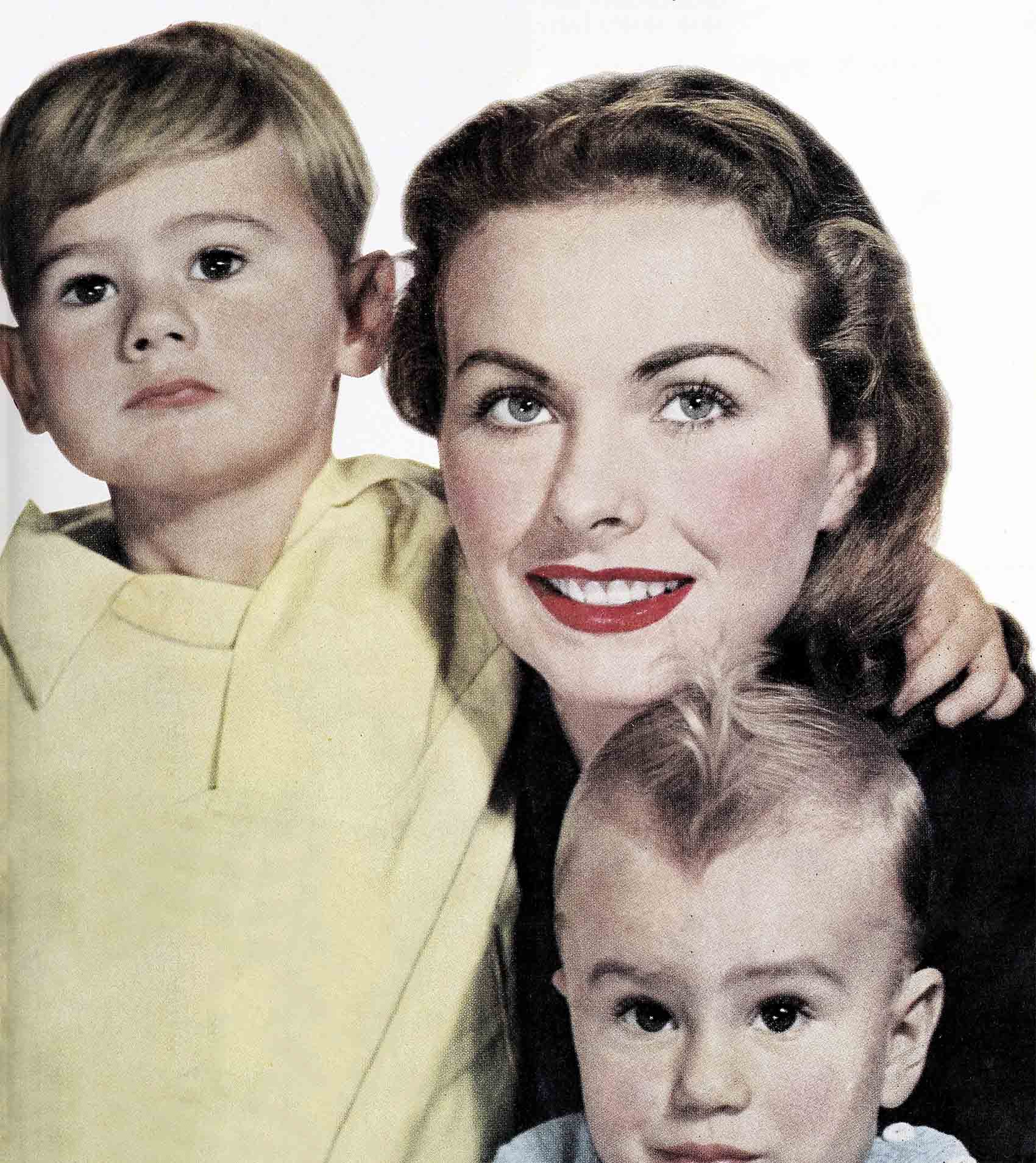
You may begin to perceive that there are no dull moments domestically. Jeanne is ecstatically trinket-happy, simply crazy about colorful little gewgaws that come from abroad. Recently, she came home from a shopping binge loaded down with wooden pictures of children and animals for the boys’ nursery that, she assured me proudly were “imports.”
“But we have a closet full of beautiful paintings of your own, all infinitely better,” I said. It wasn’t until I purposely made a production of it that Jeanne, who can’t stand to hurt the feelings of a salesclerk by returning any merchandise, agreed to take them back. It is my suspicion that she returned half of them and gave the other half away, compromising between the store and me.
“Who’s so infantile as to ever read funny papers?” she says, with blithe sweetness. But just try getting a comic out of her hand on Sunday mornings and her lily-white fingers have the strength of steel. “But I only like Blondie, Prince Valiant, Maggie and Jiggs, and the Katzenjammer Kids,” she protests.
She’s a Calamity Jeanne with waffle iron and our mixer. On the cook’s day off, she loves to make waffles, particularly since her creative eye was caught with the fact that there are some twenty-five different ways of combining them. The last batch made with sour cream, and of chewing gum consistency, launched an offensive all its own and started climbing up the mixer and fighting back at her. “I’ll never buy another off-brand mixer in my life!” she wailed. Which was a little unfair, since she hadn’t bought this one. A friend of ours who manufactures them had presented it to her. As it developed, there was nothing wrong with the mixer, just the mixture she puts into it.
She’s a closet cleaner-upper, too, from way back. For some reason I’ve never figured out, when Jeanne gets through cleaning them, there’s still more inside. But she invariably spends her day off from the studio cleaning them out. When I call home inquiring what the little woman is doing I always know the answer, but I continue to play straight for her. “I’m cleaning out closets!” she says, with the triumphant tone. “What’s the matter with the closets the way they are?” I inquire. “Nothing. They just need a little straightening out. That’s all I’m doing now.” All she’s doing then is carrying things from one closet to another.
She’s a girl of rare and diverse talents, my wife. She’s a talented actress. “Pinky” is proof of that. She’s an extremely talented artist and paints in both pastels and oils. She studied to be a concert pianist, she picked up a little violin for her role in “Cheaper by the Dozen.” And, since the day director John Ford inquired as to whether she could ride a horse and promised to use her in a Western, she’s the Brinkman’s “Mrs. Burl Ives” on the guitar. She strums fifteen selections already, including her favorite, “Top of Ole Smokey.”
Jeanne has become quite an accomplished little camerawoman too, and together, we’ve shot some 8,000 feet of color film. Most of it starring Michael Anthony and Paul Jr. Now, when we have a few friends in for dinner and a movie, while they’re still there, and since they’ve partaken of our hospitality, they have to see what we shoot, too.
Our most recent pictorial production features our children watching their mother have her footprints embedded in the forecourt of Grauman’s Chinese. She was so thrilled (their father, too) over this recognition accorded her for “Pinky,” that she insisted the whole family must go along and share in the honor with her. When I protested mildly about taking the baby, she stopped me with, “But it isn’t fair to take one without the other. Children can sense those things and they take offense, too.” Although, how a baby could take offense at the age of eight months, I’ll never know. But Michael Anthony went along and took part in the proceedings, although not as actively as his brother, Paul Jr., who had offside comments to make about how “Mommy’s makin’ mud-pies with that cement.”
His mother was about as impressed with his observation as she was with her own footprints. A favorite line of hers, and one she reads very well and often on the slightest provocation, is, “For his age, he’s really a rather remarkable child, you know.” On the evening the nurse announced “Baba Paul” could not only ride his tricycle but he could now “turn both right and left.” his mother quipped, “Call Louella, quick!” As Jeanne says, laughingly, a tricycle tidbit about two-year-old Paul Brinkman, “is about as gossipy as we get around this house.”
Jeanne says that she’s a day-dreamer, that she walks along on pink clouds. If this is true, they’re my pink clouds, too. Her wonderful philosophy of living gives every day a refreshing zest and makes my life, rutabagas and all, a grand adventure.
THE END
—BY PAUL BRINKMAN
It is a quote. PHOTOPLAY MAGAZINE MAY 1950




